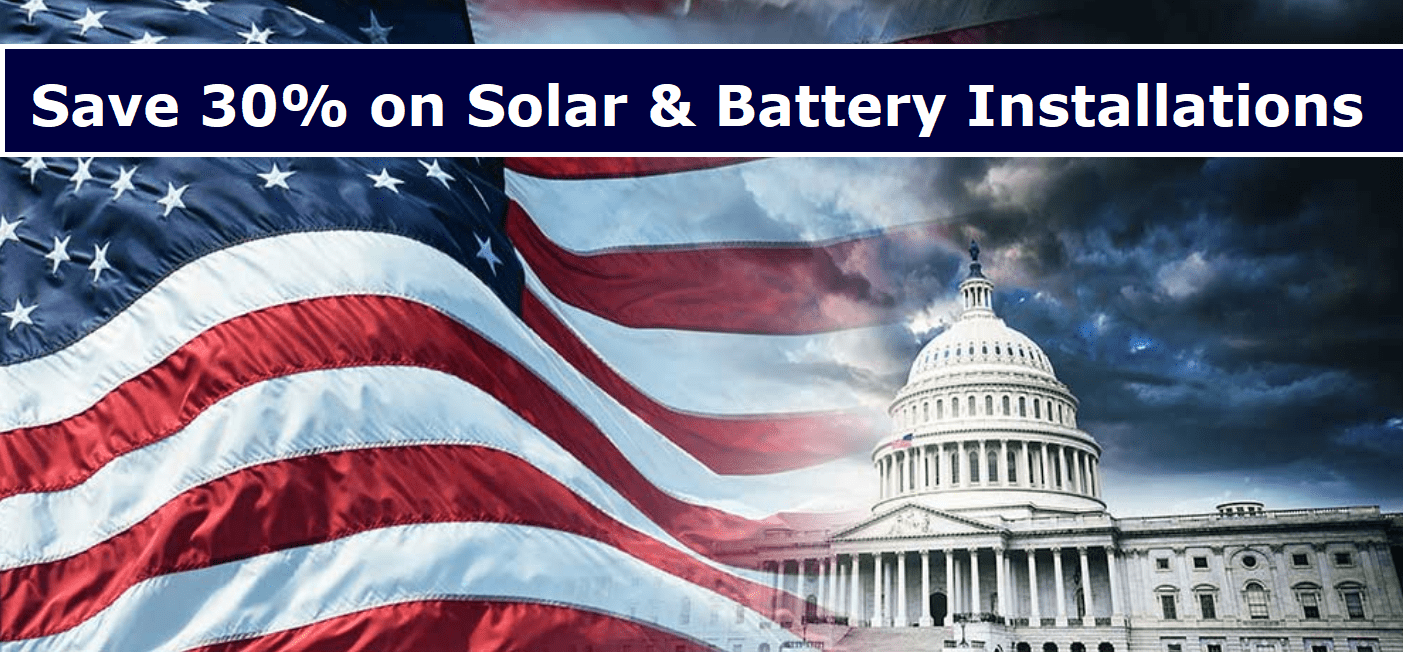January 26, 2023
Energy demand and utility rates are increasing worldwide, leading many homeowners to see a significant increase in their utility bills. One way to mitigate the cost is with solar panels and battery storage systems. These systems lower the amount of power you consume, are better for the environment and can save you money.
The Inflation Reduction Act of 2022 has increased the financial benefit and extended the timeline for homeowners to take advantage of solar credits. Here's what you need to know.
What Is the Solar Tax Credit?
The federal government first tried a solar incentive with the Energy Policy Act of 2005. The law created the Solar Investment Tax Credit, giving homeowners a 30% tax credit if they installed solar and/or battery backup systems on their property. Property owners who added panels and energy storage units could claim the cost of equipment, permitting and installation on their tax returns.
The original residential and commercial solar tax credit was supposed to expire in 2007. However, Congress renewed it multiple times because it's popular with Americans and has helped the United States progress in its renewable energy goals. The most significant change with the solar tax credit came with the Inflation Reduction Act.

What Is the Inflation Reduction Act?
The Inflation Reduction Act is a piece of legislation that Congress passed on August 7, 2022. The bill became law once President Joe Biden signed it on August 16, 2022. The legislation significantly affects domestic energy production by investing in renewable energy, such as solar panels and battery backup systems. The new law affects how residential and commercial property owners approach the solar incentive.
Congress increased the Solar Tax Credit from 26% to 30% effective immediately and extended the Tax Credit through 2032, giving homeowners another decade to use the 30% credit. The legislation aims to get homeowners to install solar systems and battery storage sooner than later. The 30% credit lasts through 2032, but in 2033 it'll drop to 26%. In 2034, it will lower again to 22%. There won't be a federal tax credit for solar energy systems after that unless Congress makes another modification.
Who Can Use This Solar Tax Incentive?
Taxpayers nationwide can take advantage of the solar tax credit. It's available to all property owners regardless of their income level on their taxes. There are some specific eligibility requirements you should know about the residential and commercial solar tax credit, including:
- Ownership: The Solar Investment Tax Credit applies to those who purchase a solar panel or battery backup storage system. Consumers who lease won't be able to use the credit on their taxes. This limitation applies to those who are part of a power-purchasing cooperative. However, stakeholders in a co-op can claim credit for their share.
- Deductions: Many people will use the solar incentive for panels they buy, but there are additional ways they can take advantage. For example, the Department of Energy (DoE) allows you to deduct storage batteries, sales taxes, and fees for inspections, developers and permits.
- State credits: This credit comes from the federal government, but some states have incentives for residents to get solar equipment. You'll be eligible for federal and state credits unless your state says otherwise. For example, New York allows its residents to get both credits.
- Applying: Before you file your taxes, check with the Internal Revenue Service (IRS) to ensure you're eligible for the solar tax credit. Use IRS Form 5695 to walk through the costs and see if you qualify. You can only claim the tax credit once for your home.
How Popular Are Solar Panels?
The Inflation Reduction Act allows the federal government to push renewable energy nationwide. Solar power accounts for about 3% of utility-scale electricity in the United States. By comparison, natural gas and coal combine for about 60% of the nation's energy resources. Americans have cut their dependence on coal nearly in half, and solar usage has increased significantly in the last decade.
Solar systems have become popular with residential and commercial owners because they lower utility bills. The reduced energy consumption and carbon footprint make them attractive to homebuyers. Having a home that is equipped for solar panels can improve its value with their curb appeal and energy-efficient features.
Solar panels harness the sun's energy through photovoltaic (PV) cells and convert it into electricity for buildings. A series of connected solar cells form a panel, and multiple panels compose a solar array. These panels take 30%-50% of the energy from the PV cells and use it for the home, returning unused power to the grid for others to use.
Homeowners reduce their utility bills by only using the energy required for their properties. Some states have a feed-in tariff. This system monitors how much solar energy you're using throughout the month. Some municipalities will pay you for the power your panels produce if you export it back to the grid, this is called Net Metering. This solar incentive has led many homeowners in states like California to get solar panels for their houses.
Improving Energy With a Solar Incentive
The world has been in an energy crisis since COVID-19. Demand has outpaced supply with pandemic lockdowns and the Russian invasion of Ukraine, and many countries are scrambling for solutions. The United States has made another push to incentivize solar power through the Inflation Reduction Act. Through the legislation, taxpayers can use financial incentives to install solar systems and lower their energy consumption.
The solar tax credit allows home and business owners to get a rebate on their panels through 2034, with a 30% rebate lasting through 2032. Taxpayers can use it to save money and help the planet. Solar panels have decreased in price over the years, so this decade is an ideal time for consumers to take advantage of these renewable energy systems.
The Climate Bill Solar Energy and Energy Storage Provisions Summary can be viewed here.


